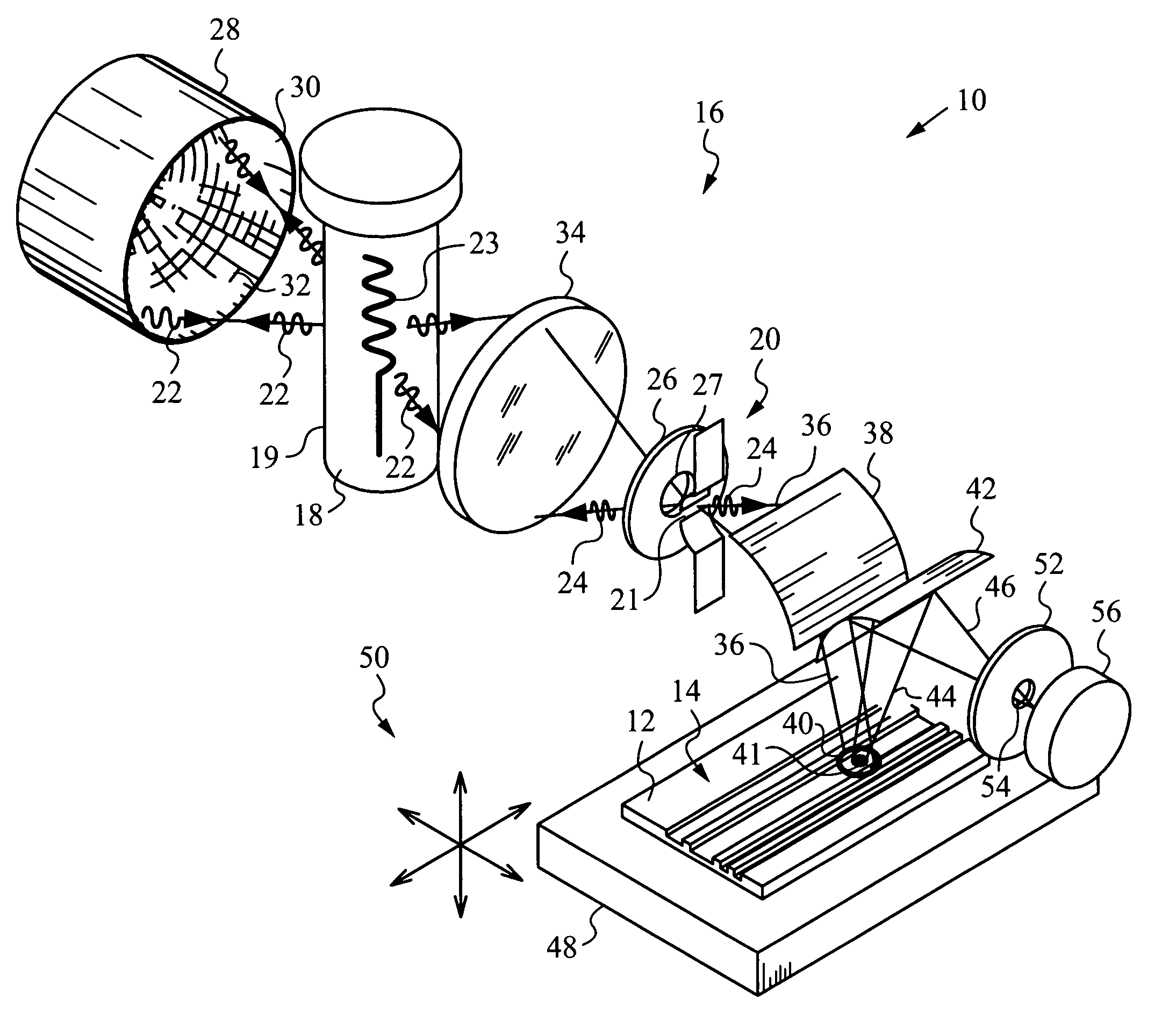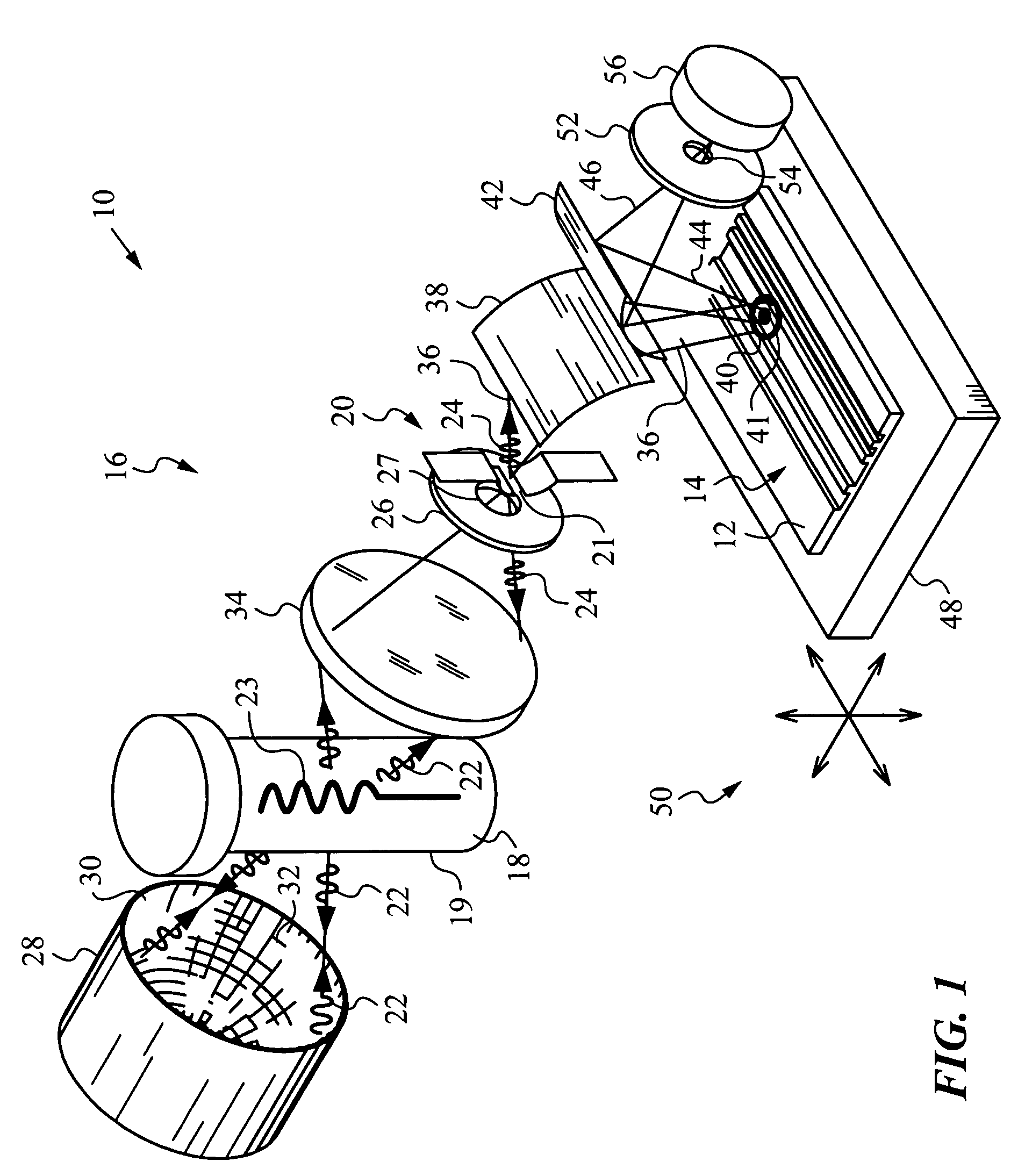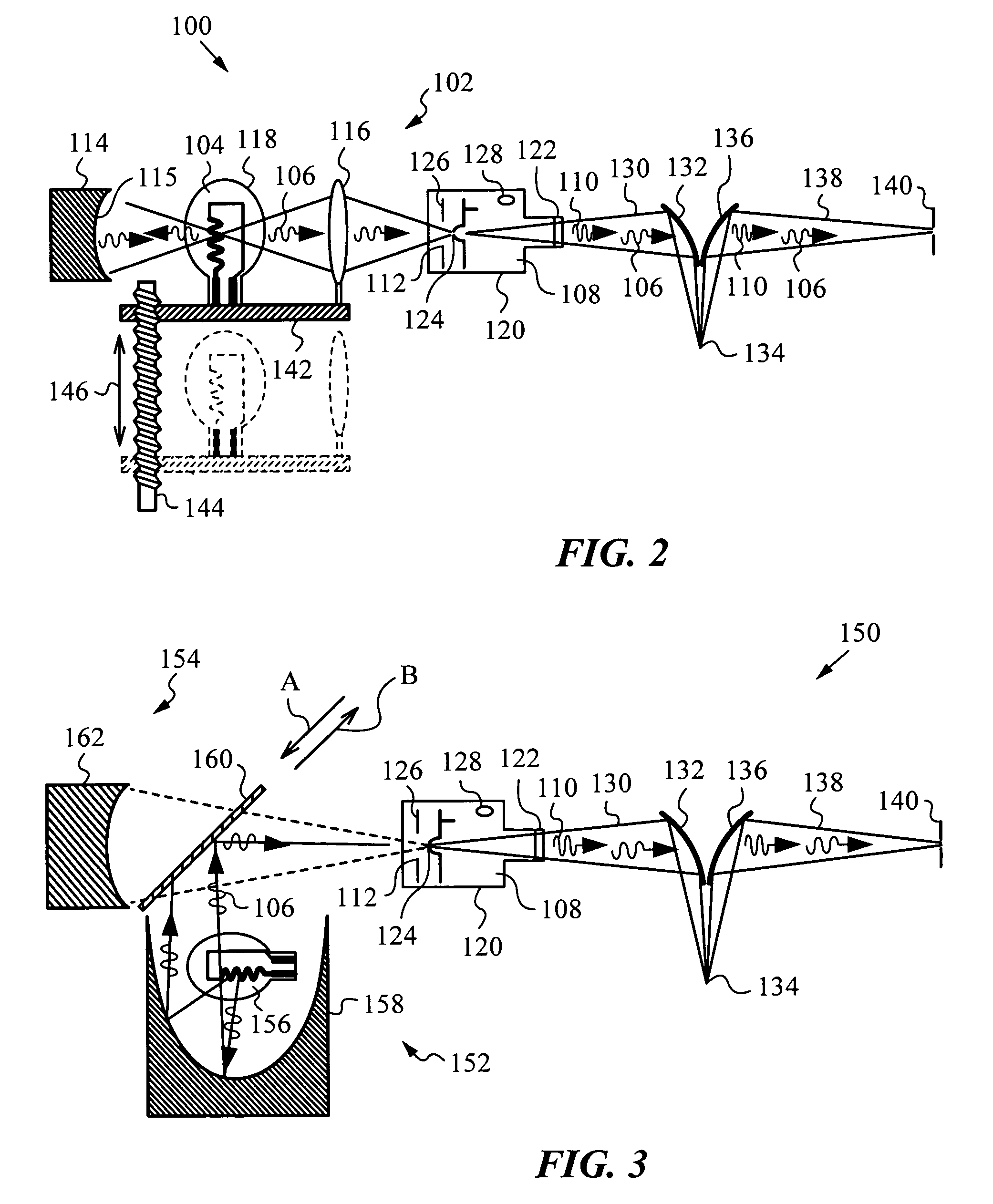System and method for high intensity small spot optical metrology
a technology of optical metrology and small spot, applied in the field of high intensity small spot optical metrology, can solve the problems of complex task of combining individual light sources to produce a single broadband output beam that satisfies the constraints imposed by the measurement method, and is not sufficient to just efficiently capture light from a single source, etc., and achieves the effect of high intensity
- Summary
- Abstract
- Description
- Claims
- Application Information
AI Technical Summary
Benefits of technology
Problems solved by technology
Method used
Image
Examples
Embodiment Construction
[0035]The present invention and its principles will be best understood by first referring to an apparatus 10 for examining features 14 of a sample 12, as shown in FIG. 1. Apparatus 10 has a compound source of light 16 that includes a long-wavelength source 18 for emitting a long-wavelength radiation 22 and a short-wavelength source 20 for emitting a short-wavelength radiation 24.
[0036]Long-wavelength source 18 is a lamp, e.g., a halogen lamp or a discharge lamp for emitting long-wavelength radiation 22 from a filament 23. Of course, other sources capable of emitting a long-wavelength radiation 22 spanning the appropriate bandwidth, i.e., visible to infrared, e.g., from about 250 nm to 900 nm or even up to 3,000 nm and above may also be used. The long-wavelength sources can themselves be compound, i.e., they may employ two or more separate emitters of different spectral portions of long-wavelength radiation 22. In any event, a casing 19 of lamp 18 is made of a wide-band transparent m...
PUM
 Login to View More
Login to View More Abstract
Description
Claims
Application Information
 Login to View More
Login to View More - R&D
- Intellectual Property
- Life Sciences
- Materials
- Tech Scout
- Unparalleled Data Quality
- Higher Quality Content
- 60% Fewer Hallucinations
Browse by: Latest US Patents, China's latest patents, Technical Efficacy Thesaurus, Application Domain, Technology Topic, Popular Technical Reports.
© 2025 PatSnap. All rights reserved.Legal|Privacy policy|Modern Slavery Act Transparency Statement|Sitemap|About US| Contact US: help@patsnap.com



